Virtual reality was a significant presence in the marketing experiences at Comic-Con International: San Diego this year. Both at the booths inside the Convention Center and the offsite events throughout downtown San Diego, a number of movie studios, television networks, and video game companies presented VR experiences designed to generate buzzworthy excitement in attendees. From Amazon’s The Man in the High Castle to Adult Swim’s Rick and Morty to Rocksteady’s Batman Arkham VR, fans throughout Comic-Con were donning virtual reality headsets.
Among the most impressive of these was the Mr. Robot Virtual Reality Experience written and directed by Mr. Robot creator and showrunner Sam Esmail, and developed for USA Network by Here Be Dragons and Within.
For an advertising piece, the VR experience ran a surprisingly long 13 minutes. One of the constraints of this type of marketing event is throughput — the number of people who can cycle through the event each hour. Of course, Sam Esmail is famous for turning in episodes of the Mr. Robot television program that run longer than their intended time slot, even going so far as to apologize on Twitter recently for doing so.
The Mr. Robot VR Experience was available from several locations during San Diego Comic-Con, including in white Uber vans designed to resemble Mr. Robot repair vehicles driving around the Gaslamp Quarter and at an event with the show’s cast at Petco Park. It was also broadcast live during the Petco Park event, allowing fans not attending Comic-Con to share the experience (in what an NBC/Universal press release described as “largest-ever co-viewing virtual reality simulcast event”). Subsequently, the VR segment has been made available for on-demand viewing on home devices, mobile phones, and desktop systems.
The most effective venue for the virtual reality experience, however, was a pop-up installation constructed in downtown San Diego that featured a physical, real-world environment that cleverly blended with the virtual content.
USA Network converted the exterior of a downtown San Diego building into a recreation of the Mr. Robot repair shop run by Elliot’s late father in the show. On entering the building, circa mid-1990s era computers, parts, and advertisements continue the illusion. A corridor at the rear of the shop leads to another room, a reconstruction of Elliot’s apartment as seen in the show. While waiting for a VR headset to free up, you can explore the details of Elliot’s life scattered around the room: his desktop computer, circuit boards, and even bills from New York City utility companies. This is familiar territory, a place we’ve seen many times in the television show.
After taking a seat and putting on a Samsung Gear headset and a pair of headphones, the real world is replaced by the virtual. The virtual environment you initially enter is, somewhat surprisingly, Elliot’s apartment — essentially identical to the physical location in which you’re actually sitting. There’s a noteworthy exception, however: As you turn your head, Elliot (played by Rami Malek) is sitting beside you.
While narratively working as a flashback — the video covers events that occurred before the time frame of show’s first season — it is, in fact, a contemporary memory. We’re experiencing Elliot’s current recollections of a much earlier event.
The voice we hear, Rami Malek’s Elliot, is the voice inside his head. As he does in the TV show, Elliot is simultaneously thinking to himself and narrating his inner thoughts to us, his ever-present, but unseen, companion.
Elliot is about to go on a first date with Shayla, a character we know from the first season of the show. In those TV episodes, Shayla is Elliot’s friend, drug supplier, and occasional lover. In the VR experience, Elliot is recalling their first encounter and how deeply he wants to avoid seeing her, how painful he finds these artificially-constructed social situations.
As Elliot smokes a joint, the camera floats upward toward the ceiling and we now view the scene from this more disengaged perspective. We follow Elliot and Shayla on their date to Coney Island and join them as they ride on a Ferris wheel, the VR simulation providing a dramatic 360-degree view of the surroundings. As their relationship grows closer, the scene melds into an abstract sequence with the two characters dancing in silhouette against a color-shifting background. Finally we return back to the “reality” of the apartment in the virtual world — and, again, in the real world when we remove the Samsung Gear headsets.
In its 13 minutes, Esmail’s piece runs the gamut from realistically grounded to surrealistically untethered and back again. As the locations change throughout the piece, the mood swings from reticence to euphoria to tragic loss.
The Mr. Robot VR video assumes we’re familiar with season 1 of the show, and uses that information as a backstory to make an immediate emotional connection. (Spoiler alert if you haven’t seen the first season of Mr. Robot.) Because of what we know of the series, Shayla’s plea for Elliot to remember her gains a profoundly melancholy dimension. We, like Elliot, feel sorrow and desperation as he struggles to hold on to his recollection of her as his memory falters and fades. It’s an emotionally powerful moment.
Aside from being a compelling VR experience, Email’s piece also an example of the power of transmedia storytelling. While based on what we know about the television series, it expands the narrative into new territory. It offers new details on the relationship between Elliot and Shayla and adds emotional depth to his feelings of loss and guilt. It’s a powerful work that both stands on its own as a self-contained 13-minute vignette and adds additional depth to television episodes.
Whatever it may indicate about the possibilities of VR for media marketing, the Mr. Robot Virtual Reality Experience may also point to the future of rich, multi-threaded storytelling across different media.
The image from the Mr. Robot Virtual Reality Experience is from a copyrighted film, the copyright for which is most likely owned by the film’s production company and/or distributor and possibly also by any actors appearing in the image. It is believed that the use of a web-resolution screenshot for identification and critical commentary on the film and its contents qualifies as fair use under United States copyright law. All other photos are copyright © 2016, Kendall Whitehouse.
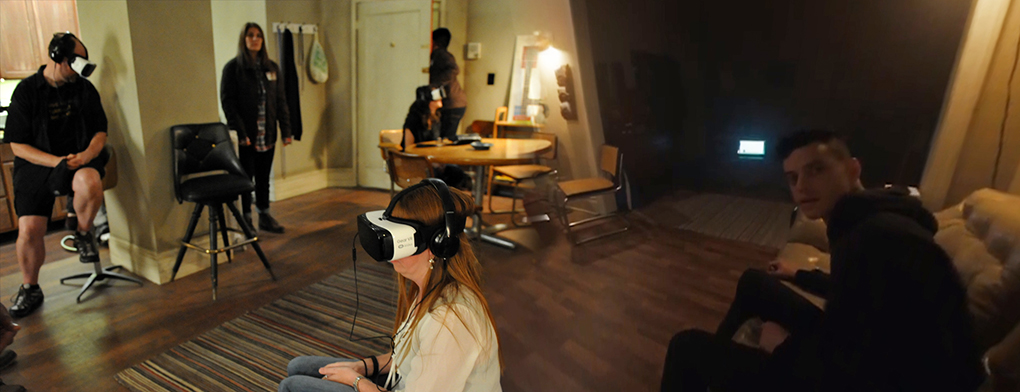
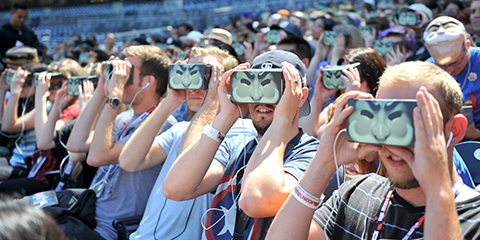
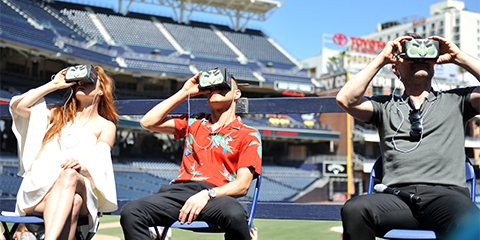
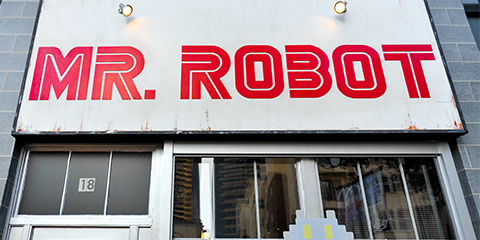
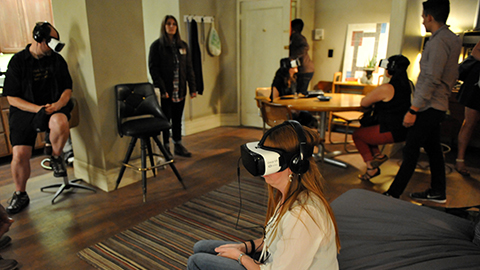

5 thoughts on “The Mr. Robot VR Experience, Storytelling, and the Future of Immersive Media”